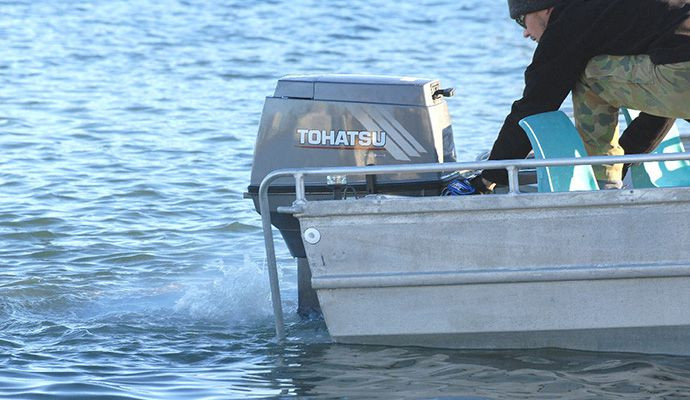Overdue emissions plan
Lagging behind most of the world, Australia will soon pass the Non-Road Spark Ignition Engine Emission legislation.
Written by Lisa Robinson
Photography by Blue Sky Alliance
16 January 2017
Twenty years behind the US, Europe, Canada, Japan, and four years behind China is not a good look for Australia. That is how far behind the country is in implementing legislation to reduce the highly pollutant emissions from household machines (like lawn mowers, brush cutters, generators) and petrol marine vessels, such as personal watercraft, outboard engines and inboard/sterndrive engines.
For 11 years, environmental agencies, concerned organisations and the government have been working towards a policy to regulate the importation of these engines and it’s finally about to happen.
Australia is set to pass the Non-Road Spark Ignition Engine Emission legislation this year.
The new legislation, timetabled to be passed by August 2017, implements an emissions standard on marine petrol engines which no conventional two-stroke engines will pass. By 1 July 2019, the importation, manufacture and sale of high emission engines will be completely prohibited in Australia. There will also be measures to certify new domestic and imported engines and cost recovery measures to support government administration of standards. Nothing used or currently owned will be restricted.
Gary Fooks, chairman of the Blue Sky Alliance, a joint venture between the Australian Marine Engine Council and the Outdoor Power Equipment Association, says the change is critical because, “we have emission controls on cars but we don’t have emission control on other things, like lawn mowers and outboards. A two-stroke lawn mower has 40 times the emissions of a car per hour – an outboard much more.
“These things are highly polluting and Australia is well behind the world in regulating them.”
The legislation will require some boat builders to upgrade hulls to cater for the use of heavier clean engines, which can be up to 25 percent heavier than current two-stroke engines. The industry has known this was coming and has had time to prepare. For example, the Australian Boat Building Standard was updated in 2009, in anticipation of the legislation coming into effect.
The cost recovery measure for compliance of the legislation is a levy on engine imports, which is likely to be under 0.40 cents per $100 on the wholesale price. “On a $5,000 retail outboard, the levy on the wholesale import price, would be around $16, which is actually quite economical per user item,” says Fooks, as he goes on to explain why the levy is necessary.
“When the government puts in new legislation, there are costs associated with its on-going management: enforcement at customs, staff to handle applications for exemptions and investigate complaints of non-compliance.”
The levy also safeguards against the potential for a high rate of non-compliance, experienced in other regions, that have implemented similar environmental policies. For example, when the European Association of Internal Combustion Engine Manufacturers (EUROMOT) advocated a similar policy, there was 42 percent non-compliance across the entire industry because measures like this were not put in place.
“The issue is that if there is not enough investment in enforcement, the big companies will be watched leaving too many loop holes. They [Europe] had rules for small volume exemptions and things were coming in from all the porous borders of Europe, with poor enforcement.”
The news of the new rules sparked fear that it would affect current dealer stock or what the public has in their garage. Fooks clarifies that that’s not the case at all, “The legislation like any new standard will affect new imports or new manufactures. It doesn’t affect what’s in the market already or what people already own. In addition, there will be nine months of notice, so that any final orders of shipment can come in – The last date for imports is planned for 30 June 2018.
Even then if a dealer has stock in Australia of non-compliant product you still have another 12 months to sell it – The last date for sale, for wholesalers and retailers, is June 30th 2019. It’s a very soft entry of the rules and there has never been any talk of banning what people own already.”
Having been a stalwart advocate for the new standard for many years, communicating with consumers and businesses about the impacts, Fooks reports that the response to the change has been mostly positive. “There is very little resistance from consumers, especially after they are informed about the alarmingly high level of pollution from these kind of engines and how far behind Australia is. There are some in the industry who don’t welcome change and have decided they want to fight it rather than prepare for it.”
Indeed, some resistance to a change of this scope is always expected. Nonetheless, agencies anticipate that with 52 percent of the market already comprising clean engines by free consumer choice, the amount of time the legislation has been in the pipeline and the length of notice dealers have received about the change, that there will be a smooth transition.
The government recently released an updated paper on the emission standard entitled “Working towards Australian emission standards for non-road spark ignition engines and equipment.”
Access the original paper online.
www.blueskyalliance.com.au










